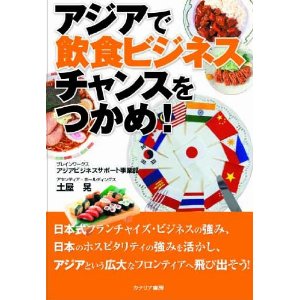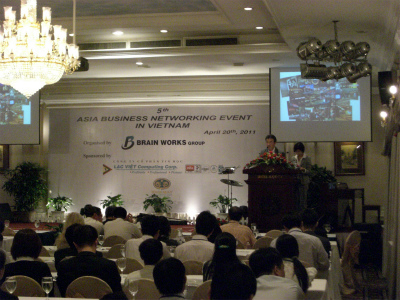アジア?としてのオーストラリア!
その前にジャカルタ、バリ(インドネシア)に滞在したのでその差がよく分かる。パース
出店のための物件調査とオーストラリアで事業展開するパートナーとのミーティング、取引先の訪問等々。西オーストラリア最大の都市であるパース。人口は230万人。
面積がひろいからか、人口230万人の都市とは思えないほど寂しい感じの都市だ。
日本で言うと30万人クラスの都市のイメージだ。CBD(ビジネスの中心地)は非常に小さく歩いて回れてしまう広さ。
小売店は18時になると閉店する。飲食も殆どは20時に閉まる。
18時に閉まってしまうお店も多い。
アルコールを買えるお店も限られた店しかない。
CBDエリアも20時になると閑散としている。夜に人の集まるフードストリートが2〜3ヶ所ある。
食事、アルコール。
アジアと違ってモールは殆ど無い。日本食もまだまだ少なく、立地とターゲットを絞り込むと面白い展開ができそうだ。
ベンチマークすべき対象店舗も複数店舗チェックした。
メルボルン
キャンベラに首都が移るまで、その機能があったメルボルン
人口は400万人強。あと数年でシドニーを抜いてオーストラリア最大の街になるメルボルン。
ここも日本の都市の感覚でいうと50万人〜60万人クラスの都市のイメージ。
この街も非常にアジア人が多い。
チャイナタウンの大きさもパースの比ではない。
日本からの飲食店舗も多く出店している。
CBDエリアはパースより広い。
デパートも多くある。アジア系の店舗が非常に多い。
両都市に共通するのはアジア人口の多さ。
パースはジャカルタから4時間半のフライトで到着する。
アジアから非常に近いのだ。
当然チャイナタウンもあり、日本、韓国の留学生も多くいる。
特に、メルボルンのアジア人の人口の多さは目を見張る。
CBDエリアを歩いていてもオーストラリアとは思えないアジア人にひっきりなしに会う。
中華料理、韓国料理、日本料理等々。
レストランもアジア料理オンパレード。
世界の都市の中で住みたい都市、住みやすい都市ランキングで
毎年、パース、メルボルン二都市ともに高評価だ。
ラーメンも九州の一幸舎が博多元助という店名で4店舗展開している。
「ばんかららーめん」も「味千らーめん」も出店している。
店舗を回ると客数の大半はアジア人だ。
オーストラリア人というか欧米系は20%にも満たない。
今後、食文化の変遷とともに欧米人も日本食、和食業態、ラーメン等々が好まれるときが来るのかもしれないが、今のところアジア人向けの店舗という感じがしている。
事業展開する業態にもよるが、ラーメンのような業態の展開の鍵は、その都市のアジア人の人口数だ。
各都市のアジア人の人口を調べてみたい。
過去に回った店舗で、アジア人の人口が多いという点で似通っている都市として
・パース
・メルボルン
・オークランド(ニュージーランド)
・バンクーバー(カナダ)
がある。
どの都市においても、アジア系の人たちが好きな業態は大流行。
先日、味千ラーメンがイタリアのミラノの空港に出店した。
アジア路線が多い空港ターミナルへの出店だ。
良い戦略だと思う。
日本食を世界に進出させるとき、現地の人たちにターゲットを絞り込むのも良いが、その場合食べたことのない日本食を食べさせるための啓蒙活動が必要だ。
スーパーマーケットに日本食類を並べれば勝手に日本食が買われていくことはまずない。
食べたことのない料理をスーパーの棚から買う人は非常に稀だろう。
逆も然りで日本のスーパーマーケットに海外の見慣れない国の、見慣れない食品が並べられていてもみなさんも買わないだろう。
アジアの人の日本食に対する知見は相当なものがあるので、そこから攻めていくのも一つの戦略なのだ。
そのエリアに住んでいるアジア人がどれくらいいるのか?どの国の人達が多いのか?
非常に重要な視点だと思う。
AssentiaHoldings Pte.Ltd.
Akira Tsuchiya
English ↓
Australian Expansion Australia as Asia
I stayed in Perth and Melbourne for a week. Before that, I stayed in Jakarta and Bali (Indonesia), so I could understand the difference.
I visited Perth to research properties for opening a new store in Perth, hold meetings with partners who are expanding their business in Australia, visit business partners, and so on. Perth is the largest city in Western Australia. The population is 2.3 million. Perhaps it is because of its large area, but it is a very lonely city with a population of 2.3 million. The CBD (Central Business District) is very small and you can walk around it. Retail stores close at 6:00 p.m. and most restaurants close at 8:00 p.m. Most restaurants close at 8 p.m. and many stores close at 6 p.m. There are only a limited number of shops where you can buy alcohol. The CBD area is also deserted at 8pm. There are a couple of food streets where people gather at night. Food and alcohol. Unlike in Asia, there are almost no malls. Japanese food is still scarce, and interesting development could be achieved by narrowing down the location and target market. We also checked several target stores that should be benchmarked.
Melbourne, which had its functions until the capital moved to Canberra, has a population of just over 4 million. In a few years, Melbourne will overtake Sydney to become the largest city in Australia. This city also has the image of a city of 500,000 to 600,000 people in the Japanese urban sense.
This city also has a very large Asian population. The size of Chinatown is not comparable to Perth. The CBD area is larger than Perth. There are many department stores. There are many Asian stores.
The common factor between the two cities is the large Asian population. Perth is only a 4.5 hour flight from Jakarta. It is very close to Asia.
Naturally, there is also a Chinatown and many Japanese and Korean students. Especially, the large Asian population in Melbourne is remarkable, and when I walk around the CBD area, I see many Asians all the time, which is hard to believe that I am in Australia.
Chinese food, Korean food, Japanese food, and so on. Restaurants are also full of Asian food.
Both Perth and Melbourne are highly rated in the annual ranking of the world's most desirable and livable cities.
In terms of ramen, Kyushu's Ikkosha has four restaurants under the name of Hakata Gensuke. Both Bankara Ramen and Ajisen Ramen have also opened stores in the city.
When I visited the stores, I found that the majority of the customers were Asian. Australians, or Westerners, account for less than 20%.
As food culture changes, Westerners may come to prefer Japanese food, Japanese-style food, ramen, etc., but for now, the stores seem to cater to Asians.
It depends on the type of business you are developing, but the key to developing a business like ramen is the number of Asians in the city.
I would like to find out the Asian population in each city.
The cities that I have visited in the past that are similar in terms of large Asian populations are Perth, Melbourne, Auckland (New Zealand), and Vancouver (Canada).
Vancouver (Canada).
In all of these cities, the type of business that Asian people like is very popular. Recently, Ajisen Ramen opened a restaurant at the airport in Milan, Italy. The company is opening a store in an airport terminal with many Asian flights.
I think this is a good strategy.
When expanding Japanese food to the rest of the world, it is good to target local people, but in this case, it is necessary to educate people to eat Japanese food they have never eaten before.
If Japanese food is displayed in supermarkets, it is unlikely that people will buy it on their own. It is very rare for people to buy food they have never eaten before from supermarket shelves.
The reverse is also true: if a supermarket in Japan were to display unfamiliar foods from unfamiliar countries, people would not buy them.
Asian people have a great deal of knowledge about Japanese food, so one strategy is to start there.
How many Asians live in the area? Which countries do most of them come from? I think this is a very important perspective.
Akira Tsuchiya, AssentiaHoldings Pte.
→ My facebook


